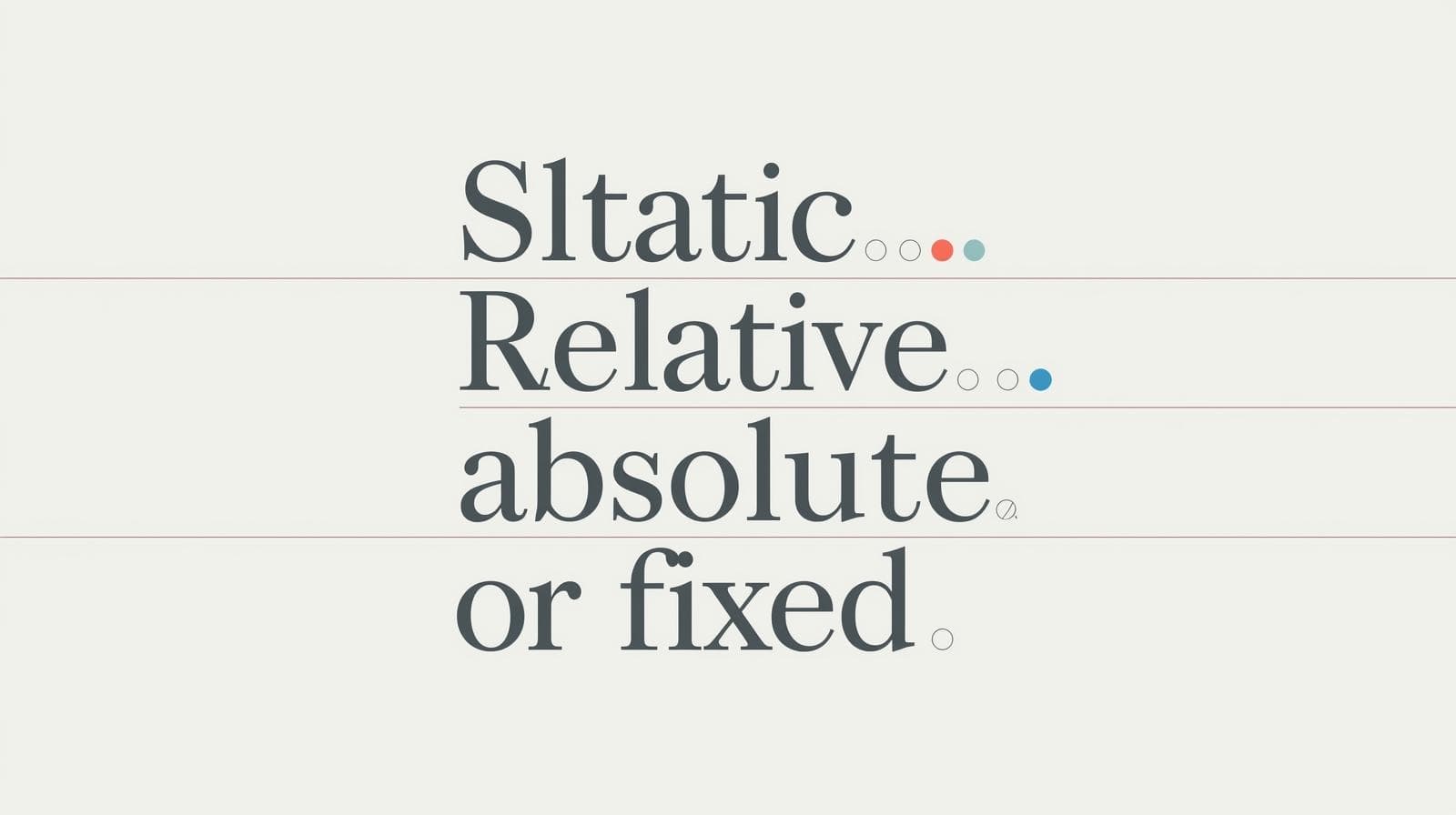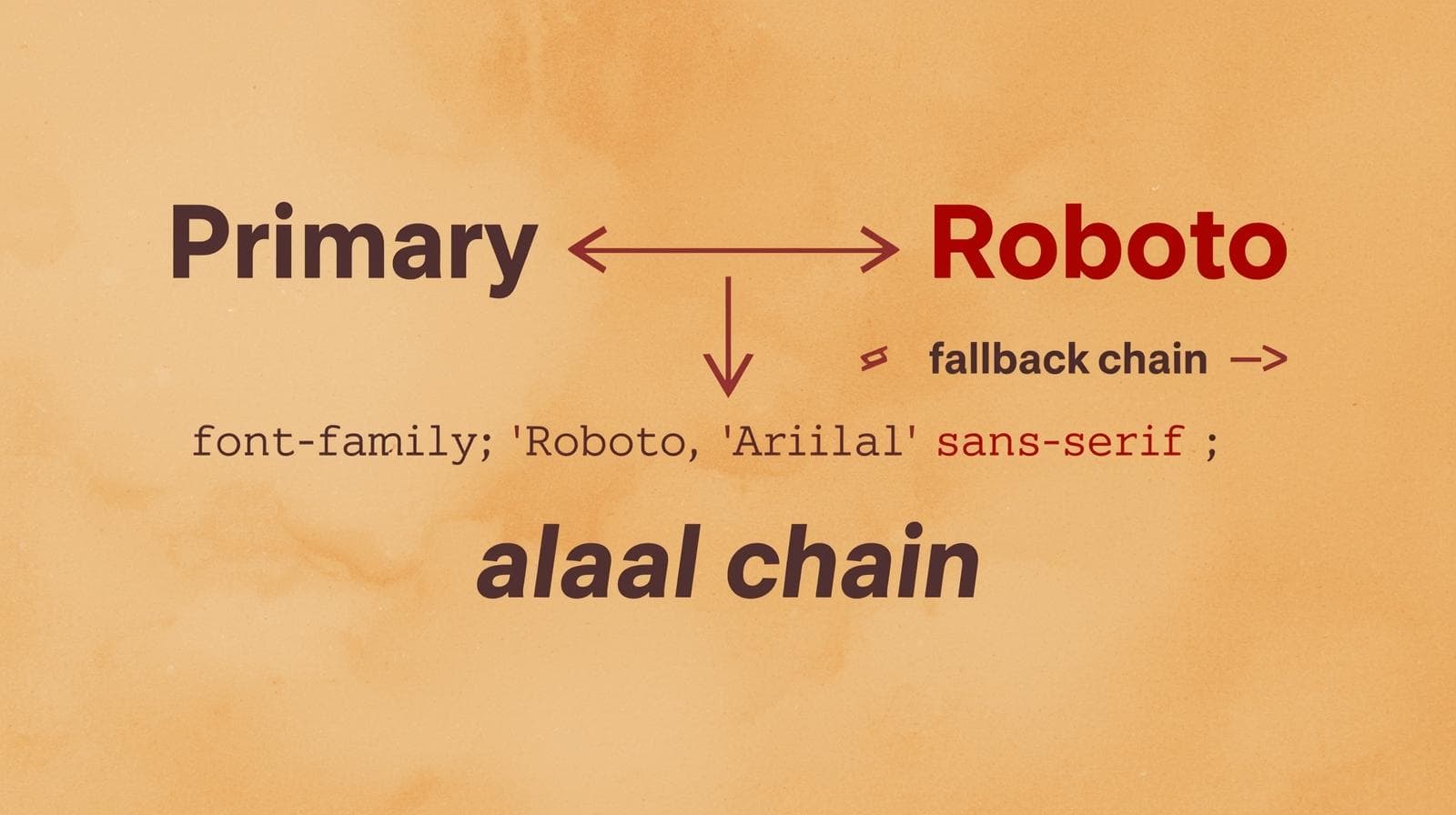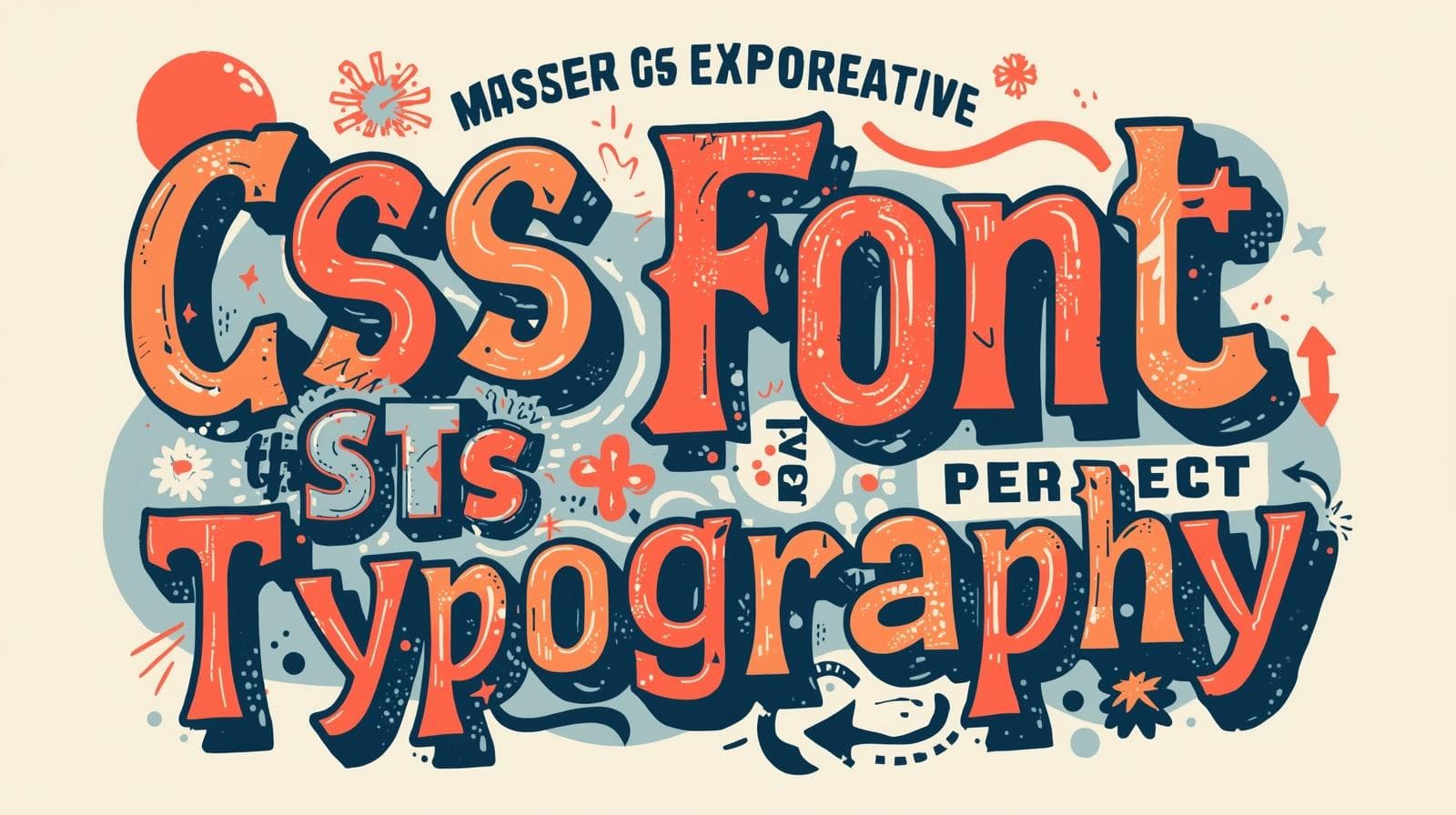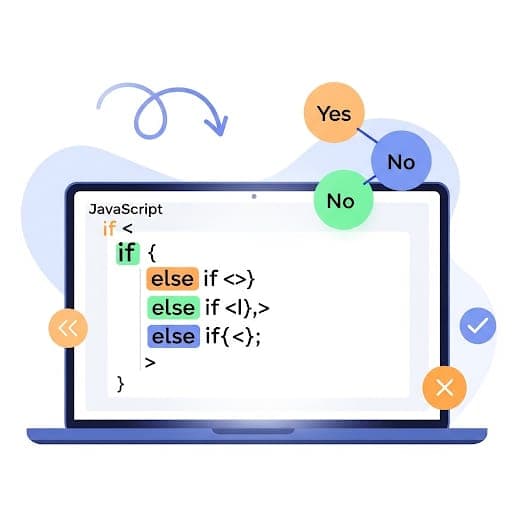CSS Specificity Demystified: How to Finally Win the Style War

Struggling with CSS not applying? Master CSS Specificity once and for all. This in-depth guide explains the cascade, rules, and hacks with real-world examples. Stop fighting your stylesheets!

CSS Specificity Demystified: How to Finally Win the Style War
CSS Specificity Demystified: How to Finally Win the Style War
You’ve been there. You write a perfectly good CSS rule, you check the browser, and… nothing happens. Your beautiful style is completely ignored. You open the DevTools, and there it is—some other rule, written who-knows-where, is stomping all over your beautiful code.
So, what do you do? If you're like most of us starting out, you reach for the nuclear option: !important. It works!... for about five minutes. Then you need to override that, so you add another !important, and suddenly your stylesheet is a ticking time bomb of !important tags. It’s a messy, frustrating cycle.
What if I told you there's a way to predict and control this chaos? A set of rules that the browser follows, almost like a secret scoring system, to decide which style gets applied. This, my friends, is CSS Specificity.
And by the end of this guide, you'll not just understand it—you'll master it.
What Exactly is CSS Specificity? Let's Break it Down
In simple, human terms: Specificity is a ranking system. When two or more CSS rules target the same HTML element and conflict, the browser uses this ranking system to decide which rule "wins."
Think of it like a game of Top Trumps. Each selector has a "score." The selector with the highest score gets its styles applied.
But it's not just about specificity. It's part of a bigger picture called The Cascade (the 'C' in CSS). The cascade decides which styles apply based on three factors, in this order:
Origin & Importance: Where the code comes from (user agent, user, author) and if
!importantis used. (This is the ultimate trump card, but use it sparingly!).Specificity: The score of the selector itself (this is our main focus today).
Source Order: If everything else is tied, the last rule declared in the CSS wins.
So, specificity is the main tie-breaker for your own code.
The Specificity Scoring System: It's Not a Base-10 Number
This is the part that confuses everyone. Specificity is not a single number like "100". It's actually represented as a tuple: (a, b, c, d). But I find it easier to think of it as a four-tiered hierarchy.
Let's meet the players, from most powerful to least:
1. Inline Styles (The Boss)
<h1 style="color: purple;">Hello World</h1>
These are styles written directly in the HTML style attribute. They have the highest specificity. Think of their score as (1, 0, 0, 0).
2. IDs (The Heavyweights)
#main-header
Any selector with an ID gets a ton of weight. Each ID adds to the score. Score: (0, 1, 0, 0) per ID.
3. Classes, Attributes, and Pseudo-classes (The Middle Management)
.button[type="submit"]:hover,:focus
These are the most common selectors you'll use. They are powerful but manageable. Score: (0, 0, 1, 0) per one.
4. Elements and Pseudo-elements (The Foot Soldiers)
divp::before,::after
These are the least specific. Score: (0, 0, 0, 1) per element.
The Universal Selector (*) and combinators (>, +, ~) have no specificity value. They don't add to the score.
Let's Calculate Some Real Scores
Selector | Specificity Score (a,b,c,d) | "Human" Score |
|---|---|---|
| (0,0,0,1) | 1 |
| (0,0,0,2) | 2 |
| (0,0,1,0) | 10 |
| (0,0,1,2) | 12 |
| (0,1,0,0) | 100 |
| (0,1,2,3) | 123 |
| (1,0,0,0) | 1000 |
⚠️ Heads up: Notice how I used "human" scores like 10 and 100? This is a common mental model, but it's a trap! An ID is not worth 10 classes. It's worth infinitely more. A specificity of (0,1,0,0) will always beat a specificity of (0,0,11,0). It's not a base-10 number; it's a hierarchy. Don't try to do math with it; compare the columns from left to right.
Real-World Scenarios: Where the Rubber Meets the Road
Enough theory. Let's look at some code.
Scenario 1: The Un-stylable Button
You have a button:
html
<button id="cta-button" class="btn btn-primary">Click Me!</button>And this CSS:
css
/* Specificity: (0,0,1,0) */
.btn-primary {
background-color: blue;
}
/* Specificity: (0,1,0,0) */
#cta-button {
background-color: green;
}
/* Specificity: (0,0,0,1) */
button {
background-color: red;
}Which color wins? Green! The ID selector #cta-button has a higher specificity (0,1,0,0) than both the class and the element.
Scenario 2: The Overly "Helpful" Framework
You're using a CSS framework like Bootstrap, which has this rule:
css
/* Specificity: (0,0,1,1) */
.navbar .nav-link {
color: #555;
}You want to override it for a specific link in your own CSS file:
css
/* Specificity: (0,0,1,0) */
.special-link {
color: hotpink;
}It doesn't work! Why? Because .navbar .nav-link (two classes) has a specificity of (0,0,2,0) if we count the two classes, which beats your .special-link's (0,0,1,0). To beat it, you'd need to match or exceed its specificity, perhaps by using .navbar .special-link.
Best Practices: How to Keep Your Specificity Low and Your Sanity High
The golden rule of specificity is: Keep it as low as possible. Low specificity makes your code easier to override and maintain.
Use Classes. Liberally. Classes are the sweet spot. They are reusable and have just enough specificity to get the job done without causing major headaches. Embrace a methodology like BEM (Block, Element, Modifier) to keep things organized.
css
/* Good */ .card {} .card__title {} .card--featured {}Avoid IDs in your CSS. Just don't. They are far too powerful and create a specificity hole that's hard to climb out of. Use them for JavaScript hooks or fragment identifiers, but not for styling.
Avoid Inline Styles. They are the worst for maintainability and create the highest specificity, making them nearly impossible to override without
!important.Be Wary of Nested Selectors (especially in SASS/SCSS). Deep nesting like
.header .nav .list .item acreates a high specificity monster. It's fragile and hard to override. Flatten your selectors where possible.!importantis a Get-Out-of-Jail-Free Card... Use it Once. The!importantdeclaration breaks the natural cascade and should be used as a last resort. The only valid uses are for:Overriding inline styles from a third-party library you can't control.
Utility classes that should always apply (e.g.,
.hidden { display: none !important; }).
Leveling Up Your Skills
Understanding core concepts like Specificity is what separates hobbyists from professional developers. It’s the foundation upon which all predictable, scalable styling is built. If you're tired of fighting your stylesheets and want to master not just CSS, but the entire landscape of modern web development, you need a structured path.
To learn professional software development courses such as Python Programming, Full Stack Development, and the MERN Stack, visit and enroll today at codercrafter.in. Our project-based curriculum is designed to take you from fundamentals to job-ready, teaching you how to think like a developer, not just copy code.
FAQs: Your Specificity Questions, Answered
Q1: Does the !important tag have a specificity value?
No, it operates outside the specificity scoring system entirely. It's a separate part of the "Origin & Importance" layer. An !important declaration will (almost) always win, regardless of specificity.
Q2: How does the :not() pseudo-class affect specificity?
The :not() pseudo-class itself adds no specificity, but the selector placed inside it does. So, p:not(#id) has a specificity of (0,1,0,1)—it gets the score from the #id and the p.
Q3: My CSS rule is later in the stylesheet, but it's still being overridden. Why?
This is the #1 sign of a specificity issue. The earlier rule has a higher specificity score than your later one. Source order only matters if the specificity is tied.
Q4: How can I quickly check specificity?
Modern browser DevTools are your best friend! In the "Elements" panel, when you inspect an element, it shows you exactly which styles are being applied and which are being overridden. It will even strike out the losing rules, making it visually obvious.
Conclusion: You Are Now the Specificity Master
So, let's recap. CSS Specificity isn't magic—it's a predictable, logical system.
It's a four-tiered hierarchy: Inline Styles > IDs > Classes/Attributes > Elements.
Calculate scores by moving from left to right; it's not a base-10 number.
The winning style is the one with the highest specificity score.
Your best strategy is to keep specificity low by primarily using classes.
Stop fearing your CSS. Stop the !important wars. Embrace the cascade, understand specificity, and you'll write cleaner, more robust, and more maintainable code.









